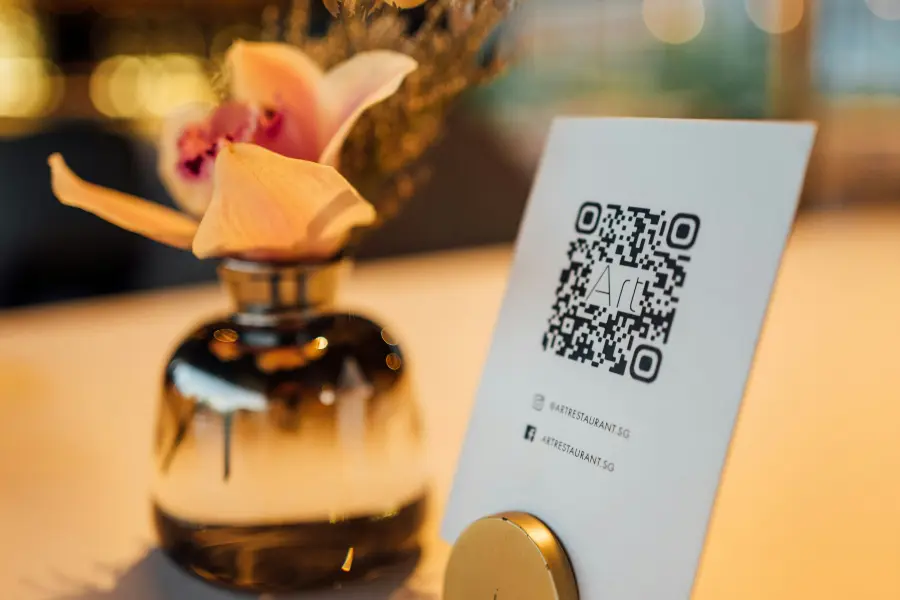Can QR Codes Be Artistic? A Look at Creative QR Design
Published on

The Intersection of Function and Form
For most of its life, the QR code has been viewed as a purely functional object—a black-and-white, pixelated tool for storing data. But as designers and artists have begun to experiment with the medium, a new question has emerged: can QR codes be artistic? Can this symbol of machine-readability also be a vehicle for human creativity and aesthetic beauty? The answer is a resounding yes. The creation of a truly artistic QR code is a delicate dance between maintaining the code's scannable integrity and pushing its visual boundaries.
From subtle branding to fully illustrated masterpieces, creative QR design is transforming these squares into memorable works of art. This article will explore the techniques and inspirations behind the movement to make QR codes beautiful.
Level 1: Branded and Colored QR Codes
The first step into artistic QR design is moving beyond the generic black and white. This is the most accessible level of customization, which you can do for free on tools like QRDesigner.com.
- Use of Color: Swapping the black for a brand color makes the code feel intentional and integrated. The key is maintaining high contrast between a dark foreground and a light background.
- Logo Integration: Placing a logo in the center of the code is a powerful branding move. This relies on high error correction (Level H) to compensate for the "damaged" area, but it's a standard and highly effective way to make a code visually appealing.
This level makes the QR code a polished marketing asset rather than a generic utility.
Level 2: Creative Integration into a Larger Design
The next level involves not just styling the code itself, but cleverly integrating it into a larger illustration or photograph. The QR code becomes a seamless part of the artwork. Examples include:
- A QR code forming the center of a camera lens in an ad for a photographer.
- The pattern of a QR code making up the windows of a skyscraper in a real estate ad.
- A QR code subtly worked into the pattern of a piece of clothing in a fashion graphic.
This technique requires a skilled graphic designer who can blend the functional code with the creative illustration without violating the code's essential "quiet zone" or compromising its contrast.
Level 3: Customizing the QR Code Modules
Some advanced (and often custom-coded) QR code generators allow for the manipulation of the code's core building blocks.
- Shaped Modules: The square "pixels" can be changed into other shapes, like circles, dots, or diamonds. This can give the code a softer, more organic feel.
- Altered Finder Patterns: The three large squares in the corners can also be stylized with rounded corners or different patterns, as long as their core structure remains recognizable to a scanner.
This level of customization requires a deep understanding of the QR code specification, as changing these core elements too much can easily break scannability. It's a high-risk, high-reward approach to creating a truly unique look.
Level 4: The New Frontier – AI-Generated QR Art
The most exciting and recent development in the world of the artistic QR code is the use of AI image generators with QR code conditioning. Using platforms like Stable Diffusion with a tool called ControlNet, designers can now create stunning, detailed illustrations that have a functional QR code embedded directly within the artwork.
The AI is trained to weave the QR code's essential patterns (the finder patterns and data modules) into the fabric of the image itself. The result is a piece of art that, from a distance, looks like a normal illustration, but when scanned with a phone, works perfectly as a QR code. This technique has produced QR codes that look like detailed Japanese paintings, futuristic cityscapes, and intricate portraits. It completely blurs the line between function and art.
The Unbreakable Rules of Artistic Design
No matter how creative you get, every artistic QR code must still obey the fundamental rules of scannability if it is to be useful.
| Rule | Why It Still Matters for Artful Codes |
|---|---|
| High Contrast | Even if the code is part of a painting, the areas representing the "dark modules" must be significantly darker than the areas representing the "light modules." |
| Intact Finder Patterns | The three corner squares are the most important part of the code. Any artistic interpretation must keep their core structure clear and recognizable. |
| Sufficient Quiet Zone | The code, even if it's integrated into a larger image, needs a clear boundary to distinguish it from other parts of the artwork. |
| Error Correction is Your Friend | The more you manipulate the design, the more "damage" you are introducing. Using the highest error correction level (H) is essential for giving your artistic creation the best chance of scanning. |
Conclusion: A Canvas for Creativity
So, can QR codes be artistic? The answer is an emphatic yes. The QR code is evolving from a simple data tool into a new creative medium. By respecting the core technical requirements, designers, artists, and now even AI are able to infuse this once-utilitarian object with personality, beauty, and brand identity. The future of QR codes is not just scannable; it's also stunning.
While the most advanced AI art techniques are still emerging, you can start your journey into creative QR design today. Visit QRDesigner.com to create a beautiful branded and colored QR code that serves as the first step in transforming your functional code into a piece of art.
